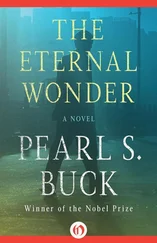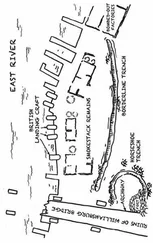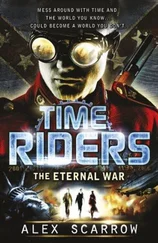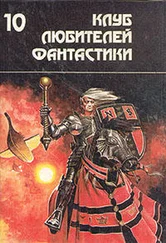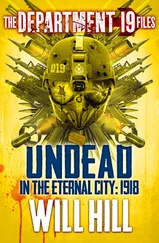“But you might miss out on your chance to become a writer,” I joked.
“So what?” she laughed. And then she quietly added, “Kentaro, I didn’t tell you this, but I got a long letter from Fujiki-san.”
“Okay.”
“He apologized for having said it over the phone. He wrote, ‘I hope you find happiness.’ And then he went over all these memories, even ones that I’d forgotten about. Fujiki-san had always watched over me.”
Keiko started to cry again. I didn’t say anything. She wiped at her face, and then laughed.
“If I don’t marry the person I love, Grandpa will scold me.”
She turned her tear-streaked face to me and smiled.
I nodded and looked up at the night sky. I was pleasantly surprised to see it was clear and starry. Never before had I seen such a lovely dome of stars over Tokyo. Keiko looked up, too.
Just then, a bright light shot through the eastern skies. It drew a short line and vanished just as quickly as it had appeared.
Looking back now, I can tell you I think that it must have been the devil himself that was piloting that Zero.
Otherwise, how could it move about with such agility with a 550-pound bomb strapped to her belly? It was unbelievable. I think there was a devil, not a human, in that cockpit.
The Zero approached the ship at an extremely low altitude. It skimmed just barely above the ocean surface, coming up dead center of the carrier’s stern. We fired on her with artillery armed with VT fuzes, but the ocean surface reflected the radar, and the shells exploded before reaching their target. Had the bastard figured out the weak point of the VT fuzes?
But even if the fuzes were useless, we could use machine guns once he got close enough. By then, the Essex-class carriers were fitted with an awesome amount of anti-aircraft cannons and machine guns. Twelve 5-inch turrets, seventy-two 40-mm machine guns, and fifty-two 20-mm machine guns, like a hedgehog with all quills braced outward. It should have been impossible to take a bite out of that hedgehog.
Once the Zero had reached 4,000 yards from the ship, the 40-mm guns all fired at once. Thousands of bullets showered a single aircraft. Countless varicolored tracer bullets streaked out from all the many machine guns.
At last, I saw flames burst forth from the Zero. “We got ’im!” I hollered. Black smoke unfurled from the Zero as she abruptly pulled up into a climb. The gunners hastily followed the plane’s course, but they couldn’t match the Zero’s sharp maneuver. It ascended, fuselage on fire, then flipped around so the canopy faced down. Once above the carrier, it began arcing back towards the deck, still upside-down. We were left staring helplessly as this devil descended upon us. I had never seen a dive like that. I mean, how could a burning plane pull off such a move?
The Zero plunged at a ninety-degree angle to the ship. I closed my eyes at the moment of impact.
The Zero struck the dead center of the deck. It caused a terrific bang, but its ordnance didn’t explode—a dud. The plane burned in the middle of the deck. Bits of the aircraft had scattered about the area. A few seamen told me afterwards that the wings had blown off just moments before impact.
We were all so badly shook up that we couldn’t speak.
On the deck lay the upper half of the pilot, torn off. It wasn’t a devil. He was a human just like us. Someone gave a scared yell and fired at the corpse with his handgun.
The flames on the flight deck were soon brought under control. Then the captain arrived.
He stared for a while at the torn body of the pilot then said to the dead man, “Good for you, dodging our superb interceptors and anti-aircraft fire and making it this far.”
We were all impressed, too. The Zero had broken through our ferocious anti-aircraft barrage in a brilliant manner.
The captain turned and addressed us in a loud voice. “I believe we ought to pay homage to this man. Tomorrow morning, we will give him a proper sea burial.”
A wave of distress rolled through the crew. I, too, was shocked.
I thought such a thing was completely unheard of. Had the pilot’s bomb gone off as it was supposed to, we could have lost any number of men.
But the captain only glared at us. The look in his eyes made it clear he would hear no objections.
We collected the scattered remains of the pilot. Then someone pulled a photograph out of the breast pocket of the guy’s uniform.
“It’s a baby.”
Everyone gathered around to get a look. I looked, too. The photo showed a kimono-clad woman holding an infant.
“Dammit, I’ve got a kid too!” Senior Chief Petty Officer Lou Amberson practically spat out. He carefully replaced the photograph back into the dead man’s breast pocket. Then he told the seamen under his command, “Be sure to bury him with it.”
The body was wrapped in white cloth and laid to rest in the holding area beneath the bridge. As I was wrapping the body, I closed the pilot’s still opened eyes.
I remember how his fearsome face turned gentle.
We tossed the Zero’s fragments into the ocean. We were unable to remove the lower half of the corpse that was still in the cockpit, so we sent it overboard with the plane. The bomb that the Zero cradled was defused and thrown overboard as well.
The next morning, all free hands were assembled on deck.
Looking back now, I think the captain’s attitude was very admirable. I learned after the war was over that his son had been killed in action at Pearl Harbor.
It made me admire what he’d done all the more.
By dawn, most of us had come to feel some respect for the nameless Japanese pilot. Our own pilots, in particular, seemed awestruck. They said the Zero pilot must have flown just above the waves for hundreds of kilometers in order to avoid detection by our radar. Such a feat required superhuman technique and concentration, as well as immense bravery, they pointed out.
“An ace. The real deal,” ruled Lieutenant Carl Levinson, the Ticonderoga ’s own ace. Many of the pilots nodded. “If there are any samurai left in Japan, I’d say he was one of them.”
I agreed. But if this man was a samurai, then we had to behave like knights.
As all the free hands stood at attention on the flight deck, a volley of rifles sounded off. The captain and his officers saluted as the shrouded corpse of the pilot slid down the plank and into the waters below.
The body of the Zero pilot, with chains serving as weight, slowly sank into the depths of the sea.
Naoki Hyakuta, born in 1956 in Osaka, earned renown in the television industry as a variety show scriptwriter before embarking on a meteoric second career as a novelist. In addition to his bestselling works exploring twentieth-century history, Mr. Hyakuta is popular for his excellent footwork in the boxing genre. In 2013, The Man They Called a Pirate won the annual Japan Booksellers’ Award, an honor he deems “much more significant” than his country’s lead prize for popular fiction. The Eternal Zero is his first work to appear in English.
EIEN NO ZERO
© Naoki Hyakuta 2006
All rights reserved
First published in Japan in 2006 by Ohta Publishing Co., Tokyo.
Worldwide English translation rights arranged with Ohta Publishing Co. through TUTTLE-MORI AGENCY, INC., Tokyo.
Published by Vertical, an imprint of Kodansha USA Publishing LLC, 2015
Ebook ISBN 9781647290467
Kodansha USA Publishing, LLC
451 Park Avenue South, 7th Floor
New York, NY 10016
www.readvertical.com
a_prh_5.6.0_c0_r0

![Nick Cracknell - The Quiet Apocalypse [= Island Zero]](/books/28041/nick-cracknell-the-quiet-apocalypse-island-zero-thumb.webp)
